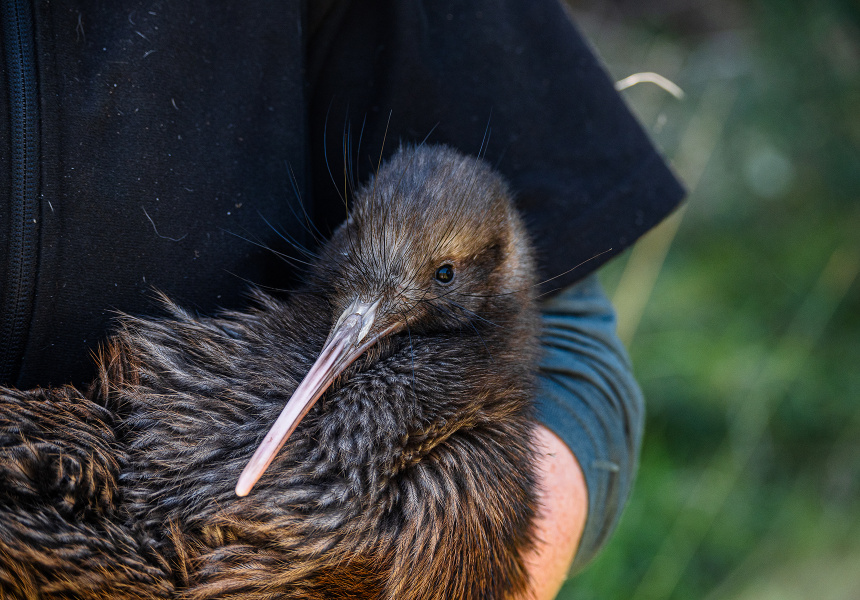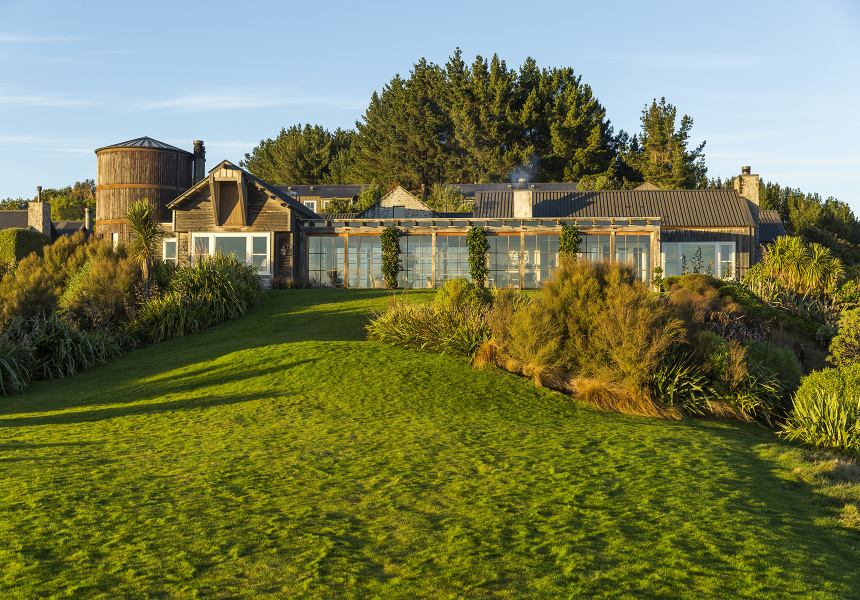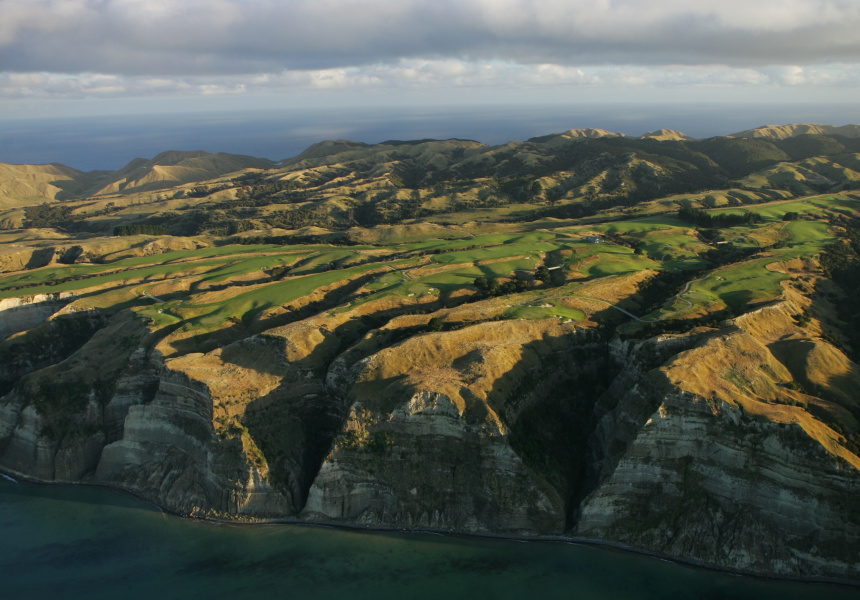There’s a rustic wooden sign about five minutes’ drive from luxury lodge The Farm at Cape Kidnappers, pointing to an exposed cliff edge and views of the Pacific Ocean.
Follow the sign’s black arrow and, depending on the time of year, you’ll find yourself just metres away from dozens of black, white and yellow tākapu (Australasian gannets) nesting on a rocky outcrop.
Every year, these adventurous, blue-eyed seabirds turn up in their thousands to raise the next generation at Cape Kidnappers – an event that’s occurred on the Hawke’s Bay peninsula since at least (according to public records) the 1870s.
Never miss a moment. Make sure you're subscribed to our newsletter today.
SUBSCRIBE NOWThe lodge’s team will take you out there on the Sunrise at Black Reef Tour. Or you can sign up for the three-hour Cape Sanctuary Experience to see rare birds such as the flightless, rotund takahē (currently numbering around 440), and witness where the team feeds endangered forest birds.
You can do all of these tours and others (like the Night Tour of Cape Sanctuary) during a stay at The Farm at Cape Kidnappers, one of three New Zealand luxury lodges and two world-renowned golf courses owned by the US-based Robertson family.
This one is 30 minutes’ drive from Napier in a rugged rural location that offers plenty of spectacular coastal scenery. There are four suites to book that sleep between two and four people, and you can also stay in the eight-person Owners Cottage. All are comfortable and elegantly decorated. Dine on fresh produce from the on-site gardens, take some time out in the spa and explore the area.
With little shelter on the working sheep and beef farm, you’ll want to dress for the occasion: a sunhat and plenty of sunscreen in summer and rugging up during the cooler months. Flat walking shoes or hiking boots are a must.
My stay at The Farm starts with a morning visit to the Black Reef gannet colony (if you plan to go, check the Department of Conservation site in case of weather warnings that close the area).
And then it’s off to The Cape Sanctuary for a guided feeding tour. Heading into the bird feeding area, manager Rachel Ward says the tour is a great way for the public to engage in and support New Zealand conservation. “All profits go directly to caring for the sanctuary species on this property.”
As we head off, I learn the feeding area is part of a privately run wildlife restoration project that began with the installation of a 10.6-kilometre predator-proof fence in 2006.
These days, introduced species such as possums, rats, feral cats and mustelids (like stoats) are kept outside its 2500-hectare boundary with constant monitoring and ongoing control.
The sanctuary was envisioned as a model of sustainable conservation upon its founding by local landowners Liz and Andy Lowe and their family. The Lowes created the sanctuary in partnership with the lodge owner at the time, the late Julian Robertson and his family.
“They wanted to see if the community and industry – in this case, farming, forestry and tourism – could come together and coexist alongside some of New Zealand’s most endangered species,” says Ward.
As we enter a pocket of dense native forest, three bright green and red kakariki (red-crowned New Zealand parakeet) fly into kānuka trees to peck on pellets and vegetables from hanging feed trays.
Walking deeper into the forest, a dozen tawny brown kākā (forest parrots that are classified as “at risk – recovering”) raucously descend from the blue sky and perch expectantly on tree branches, preening and flapping their wings.
“Don’t be surprised if you see others in this area – there’s more than 80 in the sanctuary,” says Ward, topping up the kākā feed trays.
During this hour-long tour, you’ll see a safe house for native gecko and pretty blooms of flowering pink kākābeak (another threatened species on the comeback). You might hear, like we did, toutouwai (New Zealand robins that are declining in population) – without catching a glimpse.
Before heading off, I meet volunteer David Grace, who’s using a radio transmitter to record the whereabouts of brown kiwi that are housed in the sanctuary as part of a national breeding program called Operation Nest Egg.
At our feet are dozens of deep circular holes poked into the dirt by the long beaks of New Zealand’s nocturnal native bird; a telltale sign of recent kiwi feeding.
Maybe the phantom snacker is snoozing in a burrow nearby, I venture. But the beeps of David’s radio transmitter suggest otherwise.
Picnic, one of just a few brown kiwi fitted with a sanctuary transmitter since arriving as a chick, is way off in a far gully, as are the others. When it comes time to locate Picnic and check his health in a few weeks’ time, he’ll probably have travelled further still, says Grace.
“You just never know where in the sanctuary you’ll eventually find them,” he says, filling out a spreadsheet of location data.
“Brown kiwi have large territories and travel impressive distances. But it’s wonderful knowing they’re safe and thriving here in the sanctuary – and to be able to confidently share that knowledge with guests.”
The writer toured the Cape Sanctuary at The Farm, Cape Kidnappers courtesy of Hawke’s Bay Tourism.



